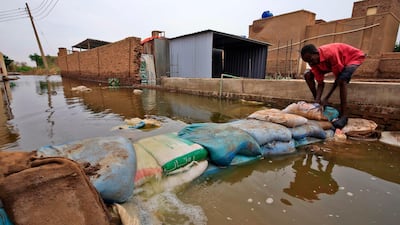Sudan has been hit by its worst flooding in decades, with heavier-than-usual rainfall causing the Blue and White Niles to breach their embankments in the capital Khartoum.
The flooding killed at least 100 people, affecting residential neighbourhoods, damaging homes and disrupting power and water supplies.
The rains, which began in late July, have steadily worsened across the country, hitting their peak last week. At the weekend, authorities declared the entire nation a natural disaster area, imposing a three-month state of emergency while thousands of volunteers joined civil defence personnel in rescue operations.
Authorities said that 50 people were also injured and 100,000 homes were damaged or destroyed across the country. As many as 500,000 people have been affected, as well as 43 schools and more than 2,000 health centres.
The destruction is a reminder of the potential devastation Sudan could face if there was a structural breach in the massive hydroelectric dam being built by neighbouring Ethiopia.
Sudan has repeatedly demanded that experts from Khartoum and the Ethiopian capital Addis Ababa closely co-operate over the operation of the Grand Ethiopian Renaissance Dam, or Gerd, which is just 19 kilometres away from its eastern border.
The Blue Nile, the river the Gerd sits on, contributes more than 80 per cent of the water to the Nile after it and the White Nile meet near Khartoum. The Nile provides water to the deserts of northern Sudan and to Egypt, where it joins the Mediterranean.
Egypt has managed to largely avoid flooding since it completed its own dam in the early 1970s.
Sudan, a nation of more 40 million people, is not new to flooding, but this year has been the worst since records began, with water levels that have not been seen before.
Images shared online show residents and volunteers trying to salvage belongings, and others attempting to free themselves after being stuck in mud.
Camps for displaced people and field hospitals were set up at schools near ravaged areas.
The United Nations said hundreds of drinking water sources had been contaminated, affecting access to clean water, a vital resource in fighting the coronavirus epidemic.
“The UN and humanitarian partners are supporting national response with emergency shelter and household supplies, together with water, sanitation and hygiene assistance, food and health services,” the world body said.










